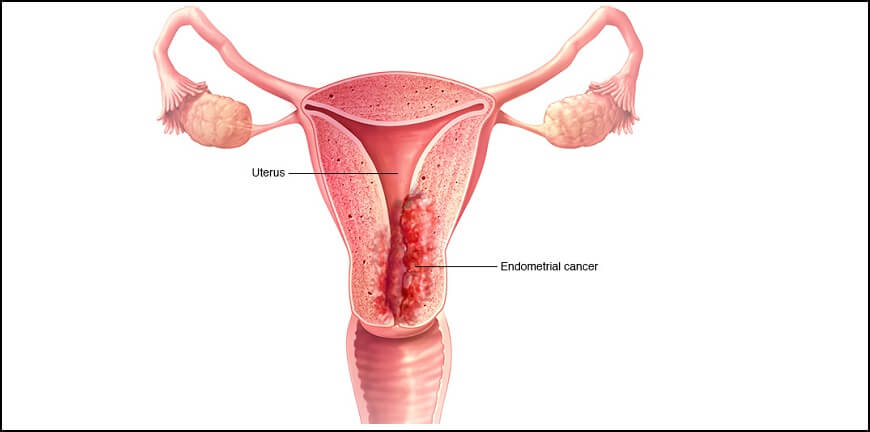A hysterectomy is the surgical removal of a woman's uterus . A hysterectomy to remove endometrial cancer usually includes the removal of the ovaries and fallopian tubes (bilateral salpingo-oophorectomy). Your doctor may also do a pelvic and para-aortic lymph node biopsy to find out the stage and grade of the cancer. Most cases of endometrial cancer are diagnosed during the earliest stage, while cancer is still contained in the uterus and can be cured.
Your surgery will depend on how much of your reproductive system may be affected by endometrial cancer.
A hysterectomy for endometrial cancer may be done with an incision (cut) in the abdomen. Sometimes a laparoscopic hysterectomy is possible. In both procedures, general anesthesia usually is used. The type of hysterectomy you have depends on your medical history and general state of health and on the extent of the cancer growth. Medical centers and surgeons may prefer to do the type of surgery that they have more experience with. Pelvic and para-aortic lymph nodes will be biopsied during surgery to help find out the stage of cancer.
Abdominal hysterectomy: The uterus, ovaries, and fallopian tubes are removed through an incision (laparotomy) in the lower abdomen.
- An abdominal incision provides a large opening into the abdomen for the surgeon to easily see the organs and to find out the extent of the cancer.
- An abdominal hysterectomy will leave a scar (usually 5 inches) on the abdomen.
- The usual stay in the hospital after an abdominal hysterectomy is 3 days.
Laparoscopic hysterectomy: Laparoscopic surgery is done with a tiny camera and special instruments. The surgeon puts these tools through several small incisions (cuts) in the belly.
- In a laparoscopic hysterectomy, the surgeon usually is able to see the organs well enough to find out the extent of the cancer.
- A laparoscopic hysterectomy leaves several very small scars on the abdomen.
- You may stay in the hospital for 1 or 2 days after a laparoscopic hysterectomy. Or you may be able to go home the same day.
When done by an experienced surgeon, laparoscopic hysterectomy may have a quicker recovery and fewer complications than abdominal hysterectomy.
Some surgeons do this surgery by guiding robotic arms that hold the surgery tools. This is called robot-assisted laparoscopy.
What To Expect After Surgery
Right after surgery, you will be taken to a recovery area where nurses will care for and observe you. Usually the stay in the recovery area is for 1 to 4 hours. You will then be moved to a hospital room. In addition to any special instructions from your doctor, your nurse will explain information to help you during your recovery. You will likely stay in the hospital 1 to 4 days after a hysterectomy. About 4 to 6 weeks after the hysterectomy, your doctor will examine you in his or her office. You should be able to return to all of your normal activities, including having sexual intercourse, in about 6 to 8 weeks. Some light bleeding or spotting is expected for up to 6 weeks following a hysterectomy. If your vaginal bleeding is heavier or different from what you were told to expect, call your doctor.
After you have a hysterectomy, you will not be able to become pregnant.
After a hysterectomy, call your doctor if you have:
Why It Is Done
Endometrial cancer most often occurs in the inner lining of the uterus and is contained within the uterus in the earlier stages. Removal of the uterus reduces the risk of cancer recurring or spreading. The ovaries are a common site for spread (metastasis) of endometrial cancer cells and so are almost always removed at the same time.
